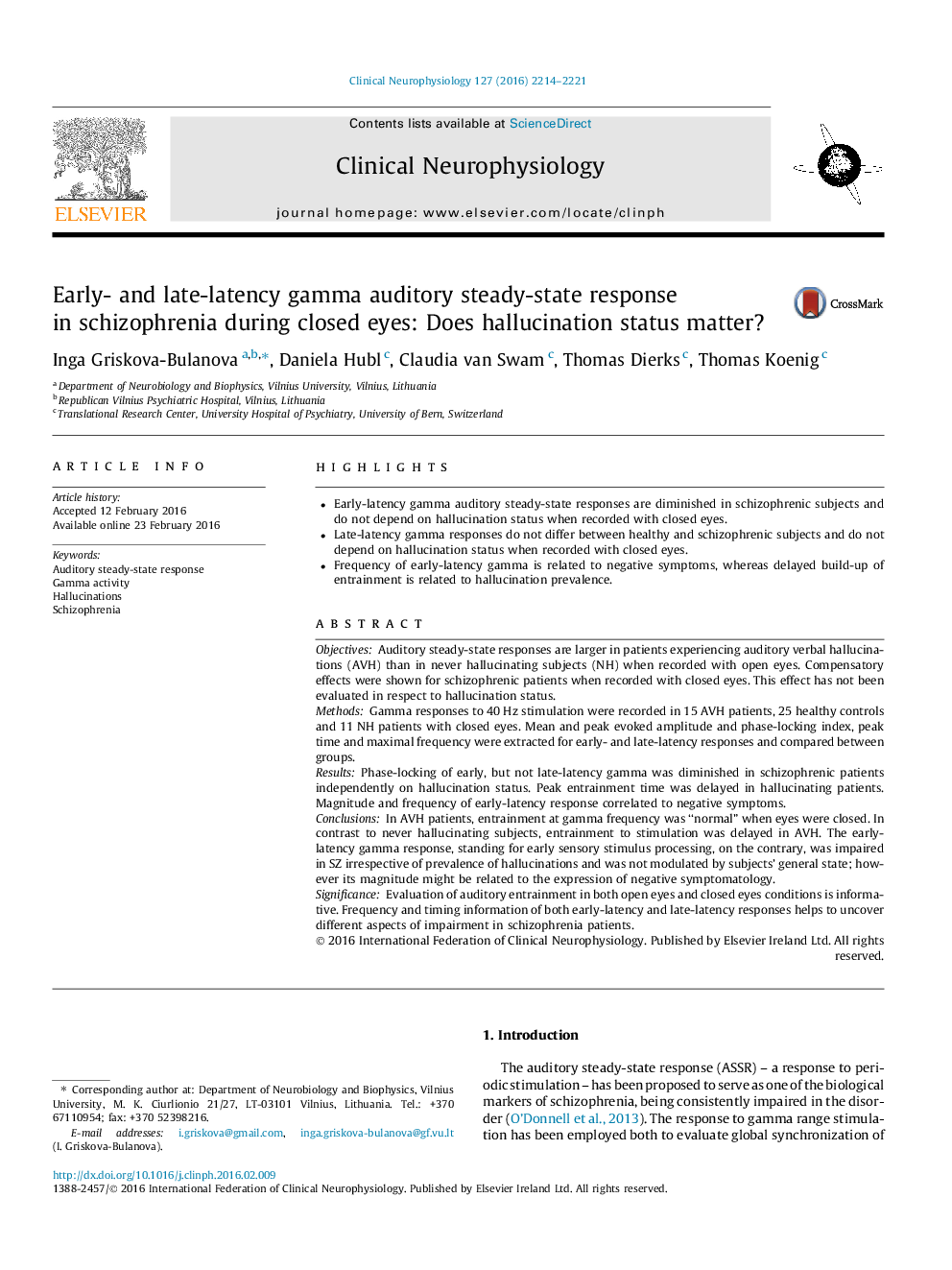| Article ID | Journal | Published Year | Pages | File Type |
|---|---|---|---|---|
| 6007447 | Clinical Neurophysiology | 2016 | 8 Pages |
•Early-latency gamma auditory steady-state responses are diminished in schizophrenic subjects and do not depend on hallucination status when recorded with closed eyes.•Late-latency gamma responses do not differ between healthy and schizophrenic subjects and do not depend on hallucination status when recorded with closed eyes.•Frequency of early-latency gamma is related to negative symptoms, whereas delayed build-up of entrainment is related to hallucination prevalence.
ObjectivesAuditory steady-state responses are larger in patients experiencing auditory verbal hallucinations (AVH) than in never hallucinating subjects (NH) when recorded with open eyes. Compensatory effects were shown for schizophrenic patients when recorded with closed eyes. This effect has not been evaluated in respect to hallucination status.MethodsGamma responses to 40 Hz stimulation were recorded in 15 AVH patients, 25 healthy controls and 11 NH patients with closed eyes. Mean and peak evoked amplitude and phase-locking index, peak time and maximal frequency were extracted for early- and late-latency responses and compared between groups.ResultsPhase-locking of early, but not late-latency gamma was diminished in schizophrenic patients independently on hallucination status. Peak entrainment time was delayed in hallucinating patients. Magnitude and frequency of early-latency response correlated to negative symptoms.ConclusionsIn AVH patients, entrainment at gamma frequency was “normal” when eyes were closed. In contrast to never hallucinating subjects, entrainment to stimulation was delayed in AVH. The early-latency gamma response, standing for early sensory stimulus processing, on the contrary, was impaired in SZ irrespective of prevalence of hallucinations and was not modulated by subjects’ general state; however its magnitude might be related to the expression of negative symptomatology.SignificanceEvaluation of auditory entrainment in both open eyes and closed eyes conditions is informative. Frequency and timing information of both early-latency and late-latency responses helps to uncover different aspects of impairment in schizophrenia patients.
